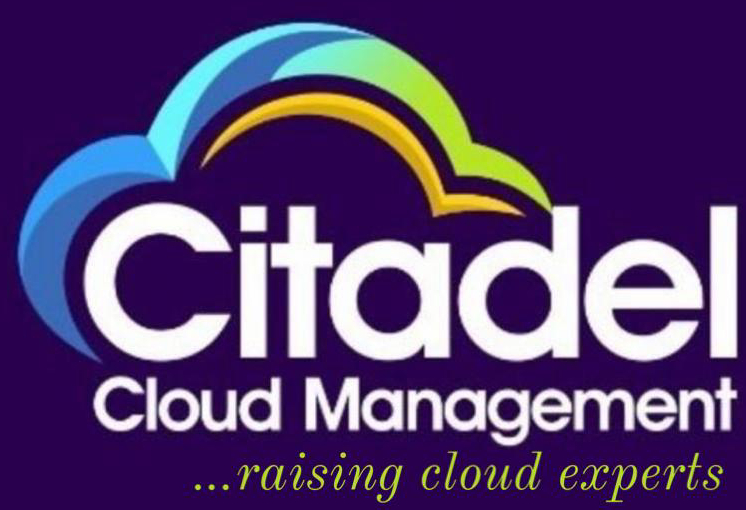
Implementing Azure DevOps, Azure Security: Protecting Your Cloud Environment
citadelcloud
As businesses migrate to cloud environments, ensuring robust security and seamless operations becomes paramount. Azure DevOps and Azure Security offer comprehensive solutions to manage and protect your cloud infrastructure. This blog post explores the implementation of Azure DevOps and Azure Security, providing a roadmap to safeguard your cloud environment.
Understanding Azure DevOps
Azure DevOps is a suite of development tools that facilitate software development and deployment. It encompasses services such as Azure Repos, Azure Pipelines, Azure Boards, Azure Test Plans, and Azure Artifacts. These tools streamline the development lifecycle from planning to deployment, ensuring efficient collaboration and continuous delivery.
Key Components of Azure DevOps
- Azure Repos: A version control system that supports Git and Team Foundation Version Control (TFVC). It allows teams to manage their code repositories efficiently.
- Azure Pipelines: Continuous integration and continuous deployment (CI/CD) service that automates the building, testing, and deployment of applications.
- Azure Boards: Agile project management tools that support Kanban and Scrum methodologies, helping teams plan, track, and discuss work across the entire development cycle.
- Azure Test Plans: A comprehensive test management tool that provides end-to-end traceability and quality reporting.
- Azure Artifacts: A package management solution that allows teams to create, host, and share packages with teams.
Implementing Azure DevOps
To successfully implement Azure DevOps, follow these steps:
1. Set Up Your Azure DevOps Organization
- Create an Organization: Start by creating an Azure DevOps organization. This will serve as the hub for your projects and repositories.
- Invite Team Members: Add team members to your organization and assign appropriate roles and permissions.
- Create Projects: Organize your work into projects. Each project can have its own repositories, pipelines, and boards.
2. Version Control with Azure Repos
- Create Repositories: Set up repositories for your projects. Use Git for distributed version control or TFVC for centralized version control.
- Branching Strategy: Implement a branching strategy that aligns with your workflow, such as Gitflow or trunk-based development.
- Code Reviews: Use pull requests to review and approve code changes before merging them into the main branch.
3. Automate with Azure Pipelines
- Create Build Pipelines: Set up pipelines to automate the building and testing of your applications. Configure triggers to run builds automatically upon code changes.
- Deployment Pipelines: Create deployment pipelines to automate the release of applications to various environments (e.g., development, staging, production).
- Pipeline Templates: Use pipeline templates to standardize your CI/CD processes across projects.
4. Manage Work with Azure Boards
- Define Work Items: Use work items to track features, bugs, and tasks. Customize work item types and workflows to fit your project needs.
- Plan and Track: Use boards, backlogs, and sprints to plan and track work. Utilize built-in reporting and dashboards for insights.
- Collaborate: Foster collaboration with team members through discussions, comments, and notifications.
5. Ensure Quality with Azure Test Plans
- Test Cases: Create and manage test cases to ensure comprehensive test coverage.
- Test Execution: Execute manual and automated tests, and track test results.
- Bug Tracking: Capture bugs directly from test results and link them to work items for resolution.
Securing Your Cloud Environment with Azure Security
Azure Security offers a suite of services and features to protect your cloud resources from threats. Key components include Azure Security Center, Azure Sentinel, Azure Active Directory (AAD), and more.
1. Azure Security Center
- Unified Security Management: Azure Security Center provides a unified view of your security posture, offering continuous monitoring and assessment of your cloud resources.
- Security Recommendations: Receive actionable security recommendations to mitigate risks. Implement these recommendations to enhance your security posture.
- Advanced Threat Protection: Utilize built-in threat intelligence and machine learning to detect and respond to advanced threats.
2. Azure Sentinel
- Cloud-Native SIEM: Azure Sentinel is a cloud-native Security Information and Event Management (SIEM) system that offers intelligent security analytics and threat intelligence across your enterprise.
- Real-Time Threat Detection: Leverage real-time analytics to detect and respond to threats. Use built-in and custom detection rules for comprehensive coverage.
- Automated Response: Automate threat response with playbooks and workflows, reducing the time to mitigate security incidents.
3. Azure Active Directory (AAD)
- Identity and Access Management: Azure AD is a comprehensive identity and access management solution. It enables single sign-on (SSO), multi-factor authentication (MFA), and conditional access policies.
- Identity Protection: Protect user identities with risk-based conditional access and identity protection features. Detect and respond to suspicious sign-in activities.
- Access Reviews: Conduct access reviews to ensure that only authorized users have access to critical resources.
Best Practices for Securing Your Azure Environment
- Enable Multi-Factor Authentication (MFA): MFA adds an extra layer of security by requiring users to verify their identity using multiple methods.
- Implement Conditional Access Policies: Use conditional access policies to enforce access controls based on user and device conditions.
- Monitor and Audit Logs: Continuously monitor and audit activity logs to detect and investigate suspicious activities.
- Use Network Security Groups (NSGs): NSGs allow you to control inbound and outbound traffic to your Azure resources. Define rules to allow or deny traffic based on source and destination IP addresses, ports, and protocols.
- Encrypt Data at Rest and in Transit: Use encryption to protect sensitive data. Azure provides built-in encryption options for data at rest and in transit.
- Regularly Update and Patch Systems: Ensure that all systems, applications, and libraries are regularly updated and patched to protect against vulnerabilities.
FAQs
Q1: What is Azure DevOps?
Azure DevOps is a set of development tools and services provided by Microsoft to facilitate the planning, development, and deployment of software applications. It includes Azure Repos, Azure Pipelines, Azure Boards, Azure Test Plans, and Azure Artifacts.
Q2: How does Azure Security Center enhance security?
Azure Security Center enhances security by providing continuous monitoring and assessment of your cloud resources. It offers security recommendations, advanced threat protection, and a unified view of your security posture.
Q3: What is the role of Azure Sentinel?
Azure Sentinel is a cloud-native SIEM system that provides intelligent security analytics and threat intelligence. It helps detect, investigate, and respond to threats in real time.
Q4: Why is Multi-Factor Authentication (MFA) important?
MFA is important because it adds an extra layer of security to user sign-ins. It requires users to verify their identity using multiple methods, reducing the risk of unauthorized access.
Q5: What are Network Security Groups (NSGs)?
NSGs are used to control inbound and outbound traffic to Azure resources. They allow you to define rules that permit or deny traffic based on IP addresses, ports, and protocols.
Q6: How can I protect data in Azure?
You can protect data in Azure by using encryption for data at rest and in transit. Azure provides built-in encryption options to safeguard sensitive information.
Conclusion
Implementing Azure DevOps and Azure Security is essential for managing and protecting your cloud environment effectively. By following best practices and leveraging the tools and services provided by Azure, you can ensure a secure, efficient, and collaborative development process. Invest in these technologies to enhance your security posture and drive business success in the cloud.
Table of Contents
Latest Articles

ADDRESS
Houston, Texas USA
US LINE
+1 (346) 652-4970
NIGERIA LINE
081 2852 0152
MAIL ADDRESS
info@citadelcloudmanagement.com
QUICK LINKS
- © 2025. All Rights Reserved By Citadel Cloud Management
